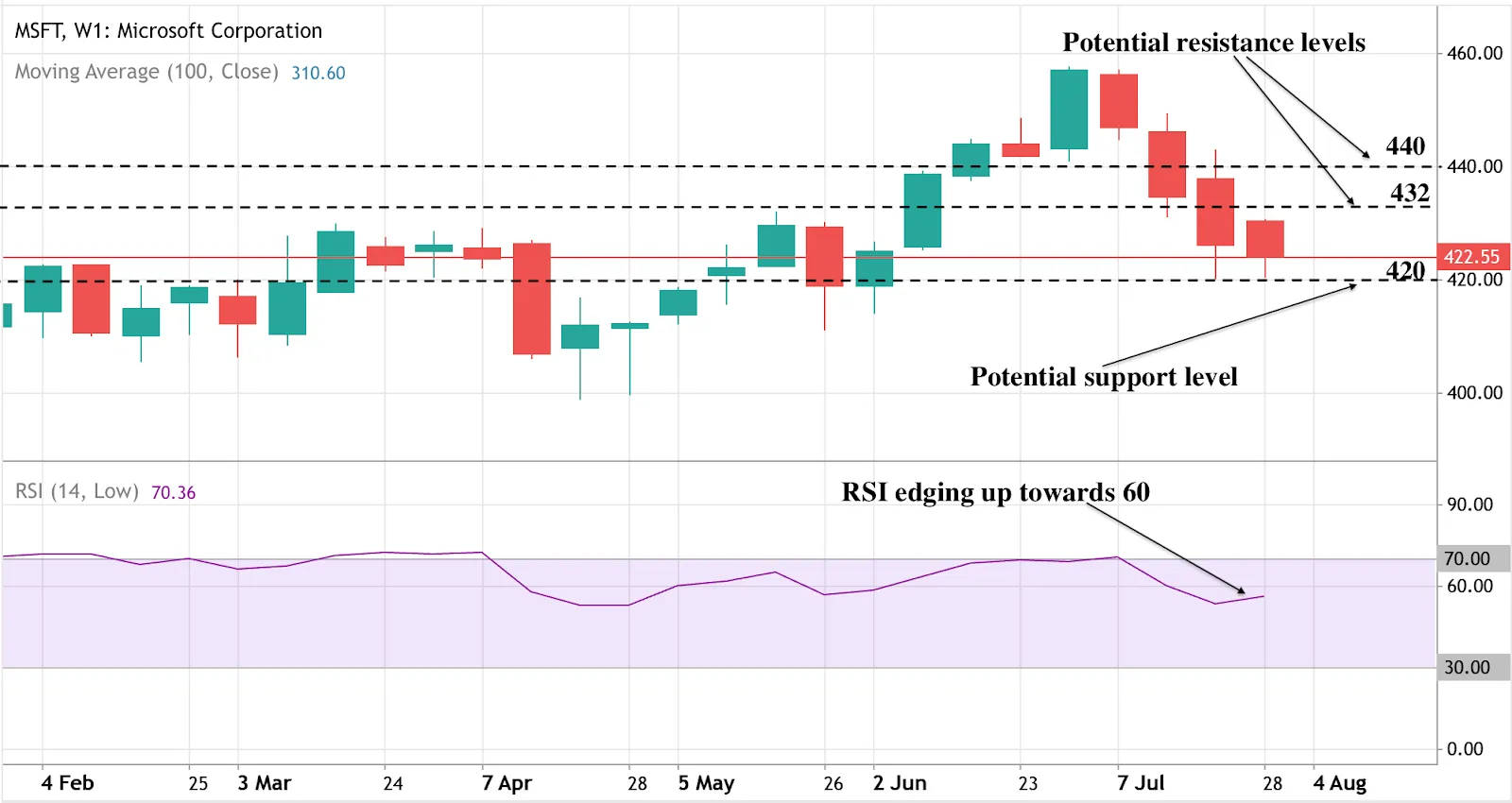Microsoft’s post earnings beat: Can the Cloud giant deliver on its AI ambitions?

Microsoft’s stock experienced a surprising 7% drop in after-hours trading following its fiscal fourth quarter 2024 earnings report. This downturn came despite the company surpassing analysts’ estimates for both earnings per share (EPS) and revenue. The culprit? A miss on cloud revenue expectations, particularly within the Microsoft Azure segment.
Earnings report
- Earnings per share (EPS): Microsoft EPS was reported at $2.95, beating analysts’ expectations of $2.94.
- Revenue: The company posted $64.7 billion in revenue, exceeding the anticipated $64.5 billion.
- Microsoft’s net profit : Net profit was $22.04 billion, or $2.69 per share, up from $20.08 billion, or $2.69 per share, in the year-ago quarter.
This stumble in the cloud arena, a key growth driver for Microsoft, triggered concerns among investors and sent ripples through the AI sector, with other AI-heavy companies like Meta experiencing a similar drop in after-hours trading.
Pockets of strength: Microsoft productivity and business processes
Despite the cloud concerns, Microsoft’s Q4 report wasn’t all doom and gloom. The company’s overall revenue grew 21% year-over-year, fueled partly by the growing demand for AI services, which contributed a significant 8 percentage points to Azure’s 29% growth. Additionally, GitHub, Microsoft’s subsidiary for software development, reached an impressive annual revenue run rate exceeding $2 billion, showcasing its robust growth.
Microsoft’s Productivity and Business Processes unit, home to Office software and LinkedIn, also exceeded expectations with an 11% revenue growth. Similarly, the More Personal Computing unit, encompassing Windows, gaming, devices, and search advertising, outperformed forecasts with a 14% increase in revenue. These successes highlight the resilience of Microsoft’s diverse portfolio.
Competition and future outlook on Microsoft cloud growth
The mixed report inevitably sparked comparisons with competitor Alphabet, which recently announced its own cloud revenue uptick driven by AI products. However, unlike Microsoft, Alphabet did not quantify AI’s precise impact, leaving analysts to speculate that significant revenue benefits from AI investments may not materialise until the first half of 2025.
Despite the challenges, Microsoft remains optimistic. The company expects accelerated cloud growth in the first half of fiscal 2025 and continues to invest heavily in AI capabilities and infrastructure. Microsoft executives emphasised their confidence in the company’s ability to meet the escalating demand for AI services, although capacity constraints for Azure AI remain a challenge in the near term.
As Microsoft navigates the rapidly evolving AI landscape and grapples with capacity constraints, the question remains, will the company achieve its ambitious goals for FY25?
With its robust portfolio of products and services, its aggressive investments in AI, and its optimistic outlook, Microsoft is certainly positioning itself for success. However, the cloud revenue miss serves as a reminder that the path to AI-powered growth may not be without some knocks and bumps. As the tech giant continues to scale its AI infrastructure and fine-tune its strategy, the coming quarters will be critical in determining whether it can fully capitalise on the AI revolution and deliver on its promises.
MSFT technical outlook: Poised for a rebound?
With several tech stocks experiencing drawdowns at the moment, we could see some more selloffs in what AJ Bell analyst Dan Coatsworth referred to as a “necessary correction”.
At the time of writing, MSFT stock appears to be edging down around the $422 mark. A further move down could find support at the $420 support level. On the upside, buyers could find resistance at the $432 mark, with a further upward movement potentially facing a more significant challenge at the psychological $440 level.
Technicals indicate some downward bias with prices remaining below the 100 EMA, while the RSI edging down from the 70 level suggests a shift from overbought conditions, signalling a potential period of consolidation or a mild pullback.

As for now, you can get involved and speculate on CFDs with a Deriv MT5 account. It offers a list of technical indicators that can be employed to analyse prices. Log in now to take advantage of the indicators, or sign up for a free demo account. The demo account comes with virtual funds so you can practise analysing trends risk-free.
Disclaimer:
The information contained within this blog article is for educational purposes only and is not intended as financial or investment advice. This information is considered accurate and correct at the date of publication. No representation or warranty is given as to the accuracy or completeness of this information.
The performance figures quoted refer to the past, and past performance is not a guarantee of future performance or a reliable guide to future performance. Changes in circumstances after the time of publication may impact the accuracy of the information.
Trading is risky. We recommend you do your own research before making any trading decisions.





.webp)
